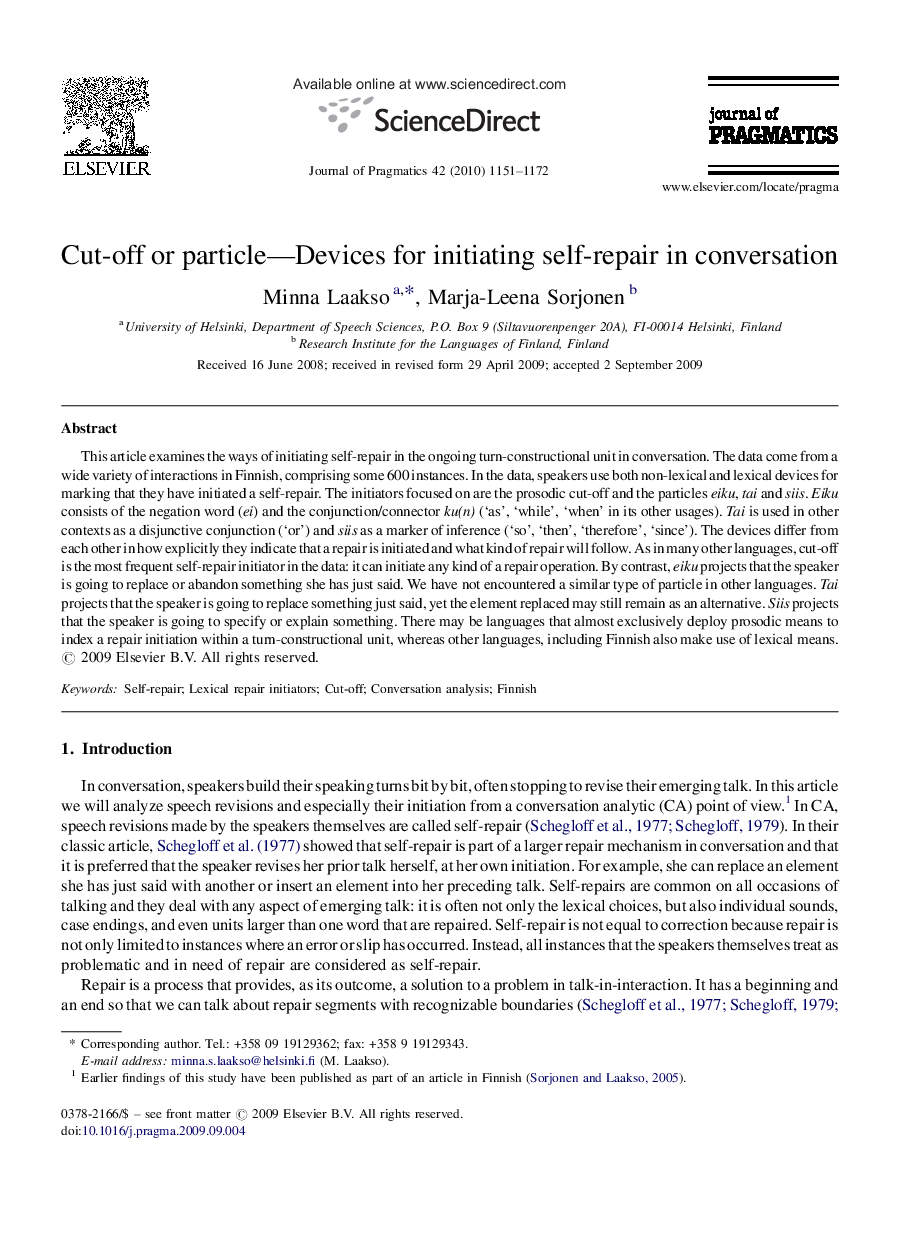| کد مقاله | کد نشریه | سال انتشار | مقاله انگلیسی | نسخه تمام متن |
|---|---|---|---|---|
| 933568 | 923348 | 2010 | 22 صفحه PDF | دانلود رایگان |

This article examines the ways of initiating self-repair in the ongoing turn-constructional unit in conversation. The data come from a wide variety of interactions in Finnish, comprising some 600 instances. In the data, speakers use both non-lexical and lexical devices for marking that they have initiated a self-repair. The initiators focused on are the prosodic cut-off and the particles eiku, tai and siis. Eiku consists of the negation word (ei) and the conjunction/connector ku(n) (‘as’, ‘while’, ‘when’ in its other usages). Tai is used in other contexts as a disjunctive conjunction (‘or’) and siis as a marker of inference (‘so’, ‘then’, ‘therefore’, ‘since’). The devices differ from each other in how explicitly they indicate that a repair is initiated and what kind of repair will follow. As in many other languages, cut-off is the most frequent self-repair initiator in the data: it can initiate any kind of a repair operation. By contrast, eiku projects that the speaker is going to replace or abandon something she has just said. We have not encountered a similar type of particle in other languages. Tai projects that the speaker is going to replace something just said, yet the element replaced may still remain as an alternative. Siis projects that the speaker is going to specify or explain something. There may be languages that almost exclusively deploy prosodic means to index a repair initiation within a turn-constructional unit, whereas other languages, including Finnish also make use of lexical means.
Journal: Journal of Pragmatics - Volume 42, Issue 4, April 2010, Pages 1151-1172